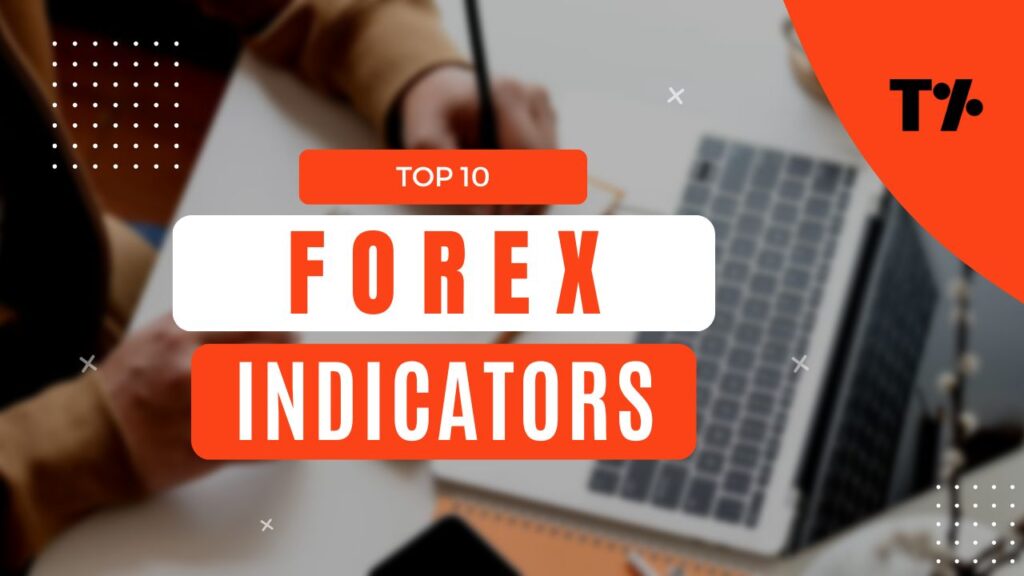
Introduction
Top 10 Forex Indicators and their tools available in the Forex markets, it’s simpler than you may think to remain ahead. Regardless of whether you’ve recently started trading or if you’ve been doing it for years, knowing trading indicators can make you stand out in the game. In this piece, we discuss the top 10 forex indicators every trader must know, including those that are suitable for scalping, day trading, as well as more long-term trading strategies. We will also briefly touch upon the likes of MetaTrader 4 (MT4) and MetaTrader 5 (MT5), and programs like TradingView, which are essential to today’s traders.
1. Relative Strength Index (RSI)
The Relative Strength Index, or RSI, is a super popular tool for figuring out momentum in Forex and stock trading. It checks how fast prices are moving and changing, helping traders see when something’s overbought or oversold. If the RSI is above 70, it usually means it’s overbought, and if it’s below 30, it’s often oversold. RSI is really helpful for guessing when price changes might happen and finding good spots to jump in or out of trades in the forex markets. When used in conjunction with price action and other indicators, RSI is an effective scalping, day trading, or longer-term trading tool.
2. Moving Averages (MA)
The Moving Average (MA) is a simple technical indicator that smooths out noise in price data by creating an ever-changing average price. Moving averages can be simple (SMA) or exponential (EMA). The SMA takes the average of the price of a currency over a specified time frame, while the EMA gives more weight to the most recent prices and is more reactive to recent price changes. Moving Average Crossing Strategy is a very popular day trading and scalping strategy. A bullish signal occurs when a short-term moving average crosses above a long-term moving average, while a bearish signal happens when it crosses below. This can be a scalper’s paradise for scalping futures or forex markets.
3. MACD (Moving Average Convergence Divergence)
The MACD is one of the Top 10 Forex Indicators. It is an indicator that shows the correlation between two moving averages of the price of a currency. There are two parts to the MACD: the MACD line and the signal line. Whenever the MACD line crosses over the signal line, it’s generally considered a bullish signal. Conversely, when it crosses below the signal line, it’s a bearish signal. The MACD is simply so useful for traders to spot possible trends and reversals, it’s a must-use tool for forex trading, day trading, and scalping futures. If you use MetaTrader 4 or MetaTrader 5, you’ll find the MACD there waiting for you.
4. Bollinger Bands
Bollinger Bands are volatility bands that are plotted above and below a moving average. They react to the circumstances of the market, expanding during times of high volatility and contracting during times of low volatility. The Bollinger Bands indicator consists of a middle band (a moving average) and two outer bands representing standard deviations from the middle band. When the price reaches the upper band, it is an indication that the market might be overbought, and reaching the lower band could indicate an oversold market. Bollinger Bands are especially useful for intraday and scalping trading, as they can spot breakout points in the market.
5. Average True Range (ATR)
Average True Range (ATR) is a volatility indicator that shows the range of price movement for a specific period. ATR will not give any information about the trend direction, but it will give the trader the market volatility. ATR is required to set stop losses and take profits and can be utilized in determining the position size. For futures or forex e mini S&P 500 traders, ATR is an excellent tool to discover market volatility and make timely trade entry and exit decisions.
6. Fibonacci Retracement
Fibonacci Retracement levels are critical price levels that indicate likely reversals in the market. The Fibonacci sequence determines the levels through a mathematical ratio, where each number is the sum of the two preceding numbers. Fibonacci retracement levels help traders identify potential resistance and support zones, making them crucial for planning trade entries and exits. The standard retracement levels are 23.6%, 38.2%, 50%, 61.8%, and 78.6%. Regardless of whether you are trading stock futures or forex, Fibonacci retracement can indeed help you deal with price pullbacks whenever trends happen.
7. Stochastic Oscillator
The Stochastic Oscillator is a momentum indicator that compares a currency’s closing price to its price range over a specified period of time. The oscillator has a range of 0 to 100, and levels above 80 are a sign of an overbought market and levels below 20 are a sign of an oversold market. The indicator is used extensively to identify trend reversals as well as potential entry and exit levels for forex traders. It is particularly effective if used together with other indicators like RSI or MACD for more accuracy. For scalping and day trading, the stochastic oscillator is a good indicator to forecast short-term price action.
8. Volume Weighted Average Price (VWAP)
Volume Weighted Average Price (VWAP) is an indicator that calculates the average price at which a security has traded throughout the day, based on volume and price. It is utilized by stock traders and futures traders as a price reference and market direction indicator. Traders look at VWAP to gain a sense of how buying and selling are proceeding throughout the trading day, allowing them to decide when to enter or exit. When the price rises above the VWAP, it indicates an uptrend, while a price below the VWAP generally signals a downtrend.
9. ADX (Average Directional Index)
The Average Directional Index (ADX) is an indicator of trend strength, not direction. ADX is used to determine if a market is trending or not. A reading over 25 confirms a strong trend, and under 20, it is a weak or no trend market. Traders typically pair ADX with the +DI and -DI lines to determine the trend’s direction. Traders utilize ADX to identify possible trends for scalping, day trading, and forex trading. If you combine it with other indicators such as RSI or moving averages, ADX can truly assist in making those accurate trading decisions.
10. Price Action
This is the last of the Top 10 Forex Indicators. Price Action trading is the analysis of price movement on the chart without the help of technical indicators. Based on patterns like candlestick patterns, trend lines, and chart patterns, traders can judge the direction of the market. Price action is most relevant in intraday trading, forex trading, and scalping because it provides instant hints about market sentiment. Traders prefer using the price action strategy to set up trades, stop losses, and targets, making it ideal for volatile markets like e-mini S&P 500 futures or forex pairs like EUR/USD.
So take a look; there are literally so many forex indicators and tools that traders can use, and they all do their own thing. Whether you day trade, scalp, or invest in stocks, having a combination of indicators such as RSI, MACD, Bollinger Bands, and ATR can totally take your trading to the next level.
These platforms, including MetaTrader 4 (MT4), MetaTrader 5 (MT5), and TradingView, provide easy access to these indicators, and it is easier for traders to analyze the market. Keep in mind that traders should not rely on a single indicator alone.. Combining multiple indicators with sound risk management will improve you as a trader.
So, first, get TradingView, check out its awesome tools, and incorporate those forex trading indicators into your trading strategy. Happy trading!
Read about the basic of Forex trading, check our blog post HERE



99fbcg
hello!,I love your writing so much! proportion we keep in touch more approximately your article on AOL? I need an expert on this area to solve my problem. Maybe that is you! Taking a look ahead to see you.
I have been exploring for a little for any high-quality articles or weblog posts in this sort of area . Exploring in Yahoo I at last stumbled upon this site. Studying this info So i?¦m glad to convey that I’ve an incredibly good uncanny feeling I found out just what I needed. I most unquestionably will make certain to don?¦t forget this web site and provides it a glance on a constant basis.